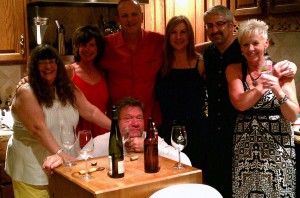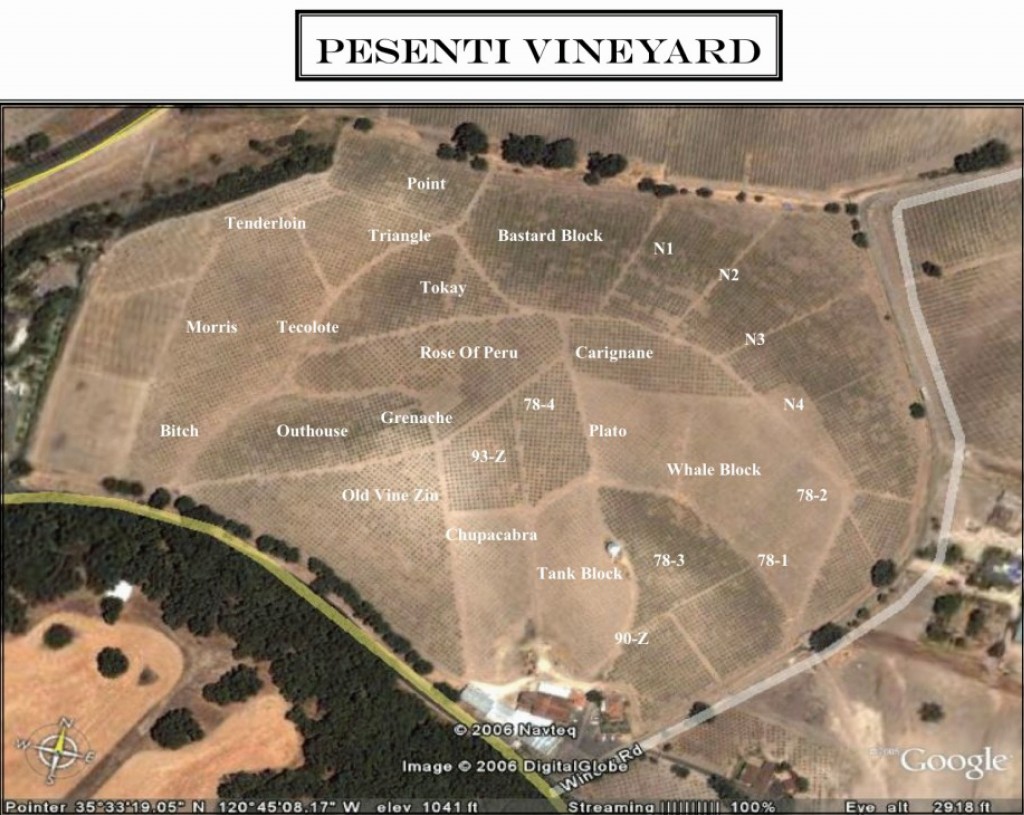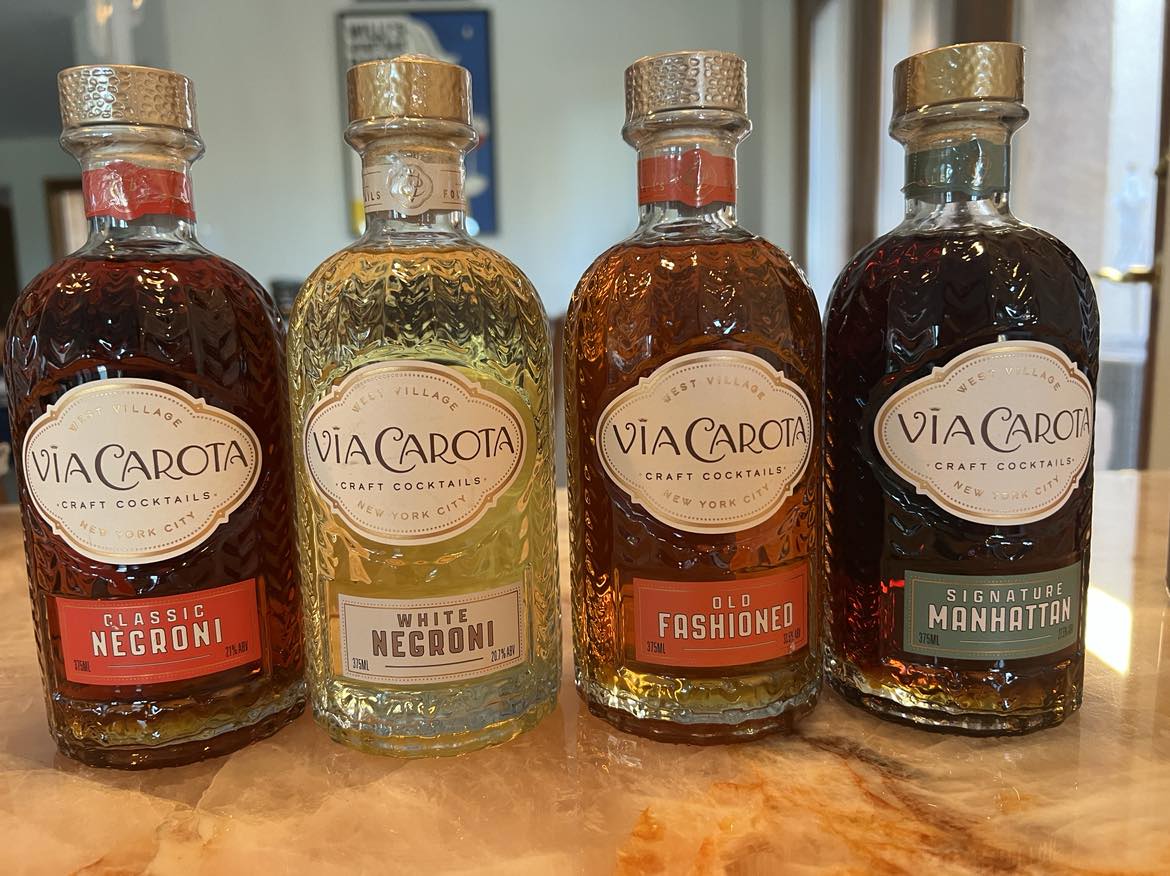As we explore the world of wines we find that as we answer one question others surface. As an aerospace engineer I am always striving to know every little detail why things are the way they are. Then add a passion, such as wine, to this equation and you have a lifetime study. While many questions may never be answered the challenge is still an adrenalin rush. One such question is terroir influences on wines. This effect ranges from country to country, within regions and even within a single vineyard. Key items that cause differences in wines include location, soil, climate, temperature, etc. It is rather easy to see differences on a macro scale such as those of an old world wine and a new world wine. For example, a French Burgundy (pinot noir) from Gevrey-Chambertin in France and Belle Glois (pinot noir) from California. Now with the Burgundy you will get a soft, elegant, multi layered wine that has a complex structure, however, with the Belle Glois you get a distinct slap in the face from copious amounts of cherries. It is these types of differences that establish wine drinkers likes and dislikes when it comes to wine styles.
One such question is terroir influences on wines. This effect ranges from country to country, within regions and even within a single vineyard. Key items that cause differences in wines include location, soil, climate, temperature, etc. It is rather easy to see differences on a macro scale such as those of an old world wine and a new world wine. For example, a French Burgundy (pinot noir) from Gevrey-Chambertin in France and Belle Glois (pinot noir) from California. Now with the Burgundy you will get a soft, elegant, multi layered wine that has a complex structure, however, with the Belle Glois you get a distinct slap in the face from copious amounts of cherries. It is these types of differences that establish wine drinkers likes and dislikes when it comes to wine styles.
Let’s look at the other extreme where all of the grapes are from one single vineyard. The challenge is to analyze a single grape varietal from one vineyard where wines were picked from different sections of the vineyard called “blocks”. Blocks can differ in the amount of sun, temperature, humidity, available water, nutrient content of the soil, etc. So what kind of expectations would you expect from such a tasting? Are these blocks truly different terroirs or is the juice from each block of a vineyard indistinguishable? Luckily, a situation provided the perfect opportunity to maybe satisfy this question.
I was fortunate to have had some varied and talented palates over for dinner one night. Talking about this topic amongst the group I mentioned that I had a case of wine from six different blocks of a single vineyard that could maybe provide some answers. The challenge was set and the decision made to open a six bottle case of 2004 Turley Pesenti Zinfandel that I had in my cellar and see if there were differences within a single vineyard by the group. To round out this taste test, I also added a 2010 Pesenti Vineyard Zinfandel made from the grapes of the entire vineyard.
 The tasting panel consisted of George and Jennifer Skorka; Chuck and Heidi Wiedeman; Rich and Mindy Bezjian; and of course author and wife (Tracy). Below are the description of the different Blocks provided by Turley with the case of wine:
The tasting panel consisted of George and Jennifer Skorka; Chuck and Heidi Wiedeman; Rich and Mindy Bezjian; and of course author and wife (Tracy). Below are the description of the different Blocks provided by Turley with the case of wine:
1) Bastard Block – North facing section of the vineyard that earned its nickname due to its 45 degree slope. The afternoons in this block are shady and lush producing more mulch for richer soil. This block is the first to ripen.
2) North Blocks – These blocks also face north having moist soil and morning sun exposure.
3) Bundah Block – Below the two previous blocks, this section ripens 10 – 20 days later making the PH very balanced. Being at the bottom of the hill means that the soil is very deep (6 – 10 feet) resulting in a low acid wine.
4) West bowl – The crater at the top of the ridge gets both east and west exposure and contains some Carignane grape varietal.
5) Outhouse Block – One of the last blocks to be picked, this section receives no morning sun due to its westerly slope. The resulting wine is PH balanced
6) Block Stable Block – At the lowest elevation on the vineyard, this block is the coolest of the vineyard. It is the last to be picked and the last to be pruned. It’s thick voluptuous body adds richness to the final blend.
As you can see from Turley’s details on the different Blocks, there is a large variations of terroirs within this single vineyard. Now the big test to see if the different Blocks produce different characteristics from the same vine stock and grape. The comments below are by couple.
1) Bastard Block
George & Jennifer: Great finesse and poetic pure tobacco leaf infused nose. The dream quickly becomes less stunning reality with stewed fruit on the palate and short length. The nose with a few minutes in the glass disappears into just existence.
Chuck & Heidi: The BASTARD block immediately revealed a great earthy nose but did not fulfill the promise on the taste. The fruit and earthiness dropped off quickly. Obviously this wine needed to be blended.
Rich & Mindy: Aroma of dark fruit, slight hint of plum. Nice finish, not too long, more of a mid palate. I got a little alcohol blowback on this one. A hint of spice and more red fruit, than dark.
2) North Block
George & Jennifer: Between the first and third wine she was like the second row of dancers on the stage. It was less impressive on the nose but kept itself balanced and fair on the palate. So this block is the fair blending material for the more eccentric brothers and sisters.
Chuck & Heidi: The NORTH Block showed more spiciness and it was easy to see what this component could bring to a blend.
Rich & Mindy: Very similar to #1, however, no hint of plum. Finish was a bit longer, more mouth feel. No alcohol blowback. Less spice (as I recall).
3) Bundah Block
George & Jennifer: The reason why Turley is still known for making quality zinfandel. Deep plum and cranberry raspberry notes, flawless nose, sweet good textured body and no heat from alcohol. Medium + length on the finish. It’s oak influence is integrated. This is a very nice wine indeed.
Chuck & Heidi: The BUNDAH block was a real treat. Excellent nose that did not disappoint with excellent balance and a long finish. We all agreed this wine could stand on its own.
Rich & Mindy: The real superstar in my opinion. Outstanding balance, exceptional finish, and it really filled my entire mouth. Lots of red fruit, and some earthiness.
4) West Bowl
George & Jennifer: The red flag for TCA believed to be in this wine quickly went away but the disjointed existence remained. The wine had no direction or clear agenda. It’s jam like note were wandering asking you what to do.
Chuck & Heidi: The WEST BOWL BLOCK was a disappointment as the flavors seemed off to most of us. The consensus was that carignane, that is also in this block and harvested with the zinfandel, contributed to the not so pleasing taste.
Rich & Mindy: Wondering if there was something wrong with this one. I got a mustiness on the nose, and tasted it also.
5) Outhouse Block
George & Jennifer: The perfect blending material. The purple cave, pepper spice seaweed aromatics with red stone mid palate richness were impressive.
Chuck & Heidi: The OUTHOUSE block was also a pleasant wine with excellent acidity overall balance. An interesting note here is that the 4 women in our group found this one the most pleasing block, where the 4 men preferred the BUNDAH block.
Rich & Mindy: Almost as good as 3. Very similar, but a little less structured.
6) Stable Block
George & Jennifer: The California dream Zinfandel for many. Hollywood colors flawlessly entertain the voluptuous body loving crowd. No errors no faults. Marilyn Monroe imitation act with extra pounds on the body.
Chuck & Heidi: The final component was the STABLE block which presented as big and jammy. This is the type of zin that many people like to drink as is, but for us, we are glad it is only a component of the fabulous blends.
Rich & Mindy: No comments
7) 2010 Turley Pesenti
Chuck & Heidi: Finally, tasting the 2010 Turley Pesenti Vineyard bottling makes you appreciate the artistry that a winemaker can achieve in the blending. I only wish we could know the block blending proportions that were used for the 2004 bottling.
This tasting was not only educational but surprising to many of us. As you can see from the notes, there are not subtle, but large differences even within a single given vineyard. The next question is how the vintner deals with this. Do they pick and press all of the grapes together or do they keep blocks separate and blend them to acquire the taste profile they wish for? Justin Isoceles Reserves are made by blending many different cabs from around the Paso area to create the basis for their Meritage. The Isoceles tour is well worth taking if you have not gone on it but make sure you call for reservations. If you want to see and discover what this group found you must go.
In conclusion I think Chuck summed it up when he said, ” Anyone who is a fan of California Zinfandels knows the range of character that this grape can achieve in the many regions where it is grown. From the big, jammy-ripe zins of Amadore to the juicy, bright fruit zins of Sonoma or the spicy zins of the Russian River Valley. So it was a very special experience to taste a vintage of zinfandel, block by block from an exceptional vineyard produced by an exceptional winery. Characteristics of terroir that can be found on a large scale can also be found within a single vineyard.”
Cheers,
Rusty Sly










